 W
WThe ailette was a component of thirteenth century knightly armour. Usually made of cuir bouilli, ailettes were thick, quadrangular pieces of leather or wood that attached to the shoulders by means of silk or leather cord. Ailettes were usually flat and nearly rectangular in shape, and usually decorated with heraldic designs.
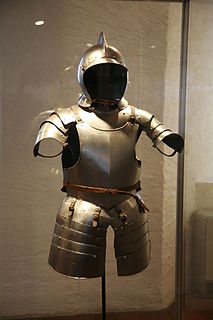 W
WAn Almain rivet is a type of flexible plate armour created in Germany in about 1500. It was designed to be manufactured easily whilst still affording considerable protection to the wearer. It consisted of a breastplate and backplate with laminated thigh-guards called tassets. Almain rivets were generally of fairly low quality, but they were cheap: a royal proclamation issued by Henry VIII in 1542 designated them at 7s 6d, which equated to one sixth of the cost of a suit of demi-lance armor. Almain rivets were frequently purchased en masse as munitions-grade armour to equip royal armies or personal retinues.
 W
WAn aventail or camail is a flexible curtain of mail attached to the skull of a helmet that extends to cover the throat, neck and shoulders. Part or all of the face, with spaces to allow vision, could also be covered.
 W
WThe bascinet – also bassinet, basinet, or bazineto – was a Medieval European open-faced military helmet. It evolved from a type of iron or steel skullcap, but had a more pointed apex to the skull, and it extended downwards at the rear and sides to afford protection for the neck. A mail curtain was usually attached to the lower edge of the helmet to protect the throat, neck and shoulders. A visor was often employed from ca. 1330 to protect the exposed face. Early in the fifteenth century, the camail began to be replaced by a plate metal gorget, giving rise to the so-called "great bascinet".
 W
WBases are the cloth military skirts, generally richly embroidered, worn over the armour of later men-at-arms such as French gendarmes in the late 15th to early 16th century, as well as the plate armour skirt later developed in imitation of cloth bases for supplemental upper-leg protection, worn by men-at-arms for foot combat.
 W
WBesagews, also spelled besagues, are a type of rondel designed to protect the armpits, as part of a harness of plate armour. The armpits are the location of the axillary arteries, and protecting them was therefore vital. Armour without besagues might employ larger shoulder defenses, such as winged pauldrons, or simply leave the mail beneath exposed.
 W
WA bevor or beaver is a piece of plate armour designed to protect the neck, much like a gorget.
 W
WA brassard or armlet is an armband or piece of cloth or other material worn around the upper arm; the term typically refers to an item of uniform worn as part of military uniform or by police or other uniformed persons. Unit, role, rank badges or other insignia are carried on it instead of being stitched into the actual clothing. The brassard, when spread out, may be roughly rectangular in shape, where it is worn merely around the arm; it may also be a roughly triangular shape, in which case the brassard is also attached to a shoulder strap. The term is originally French, deriving from bras meaning "arm".
 W
WA breastplate or chestplate is a device worn over the torso to protect it from injury, as an item of religious significance, or as an item of status. A breastplate is sometimes worn by mythological beings as a distinctive item of clothing.
 W
WA brigandine is a form of body armour from the Middle Ages. It is a garment typically made of heavy cloth, canvas, or leather, lined internally with small oblong steel plates riveted to the fabric, sometimes with a second layer of fabric on the inside.
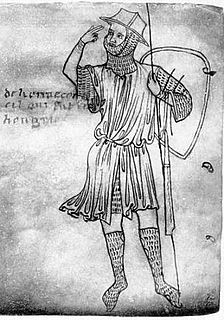 W
WChausses are armour for the legs, usually made from mail. They could extend to the knee or cover the entire leg. Chausses were the standard type of metal leg armour in Europe from the 11th to the 14th century. Chausses offered flexible protection that was effective against slashing weapons. However, the wearer still felt the full force of crushing blows.
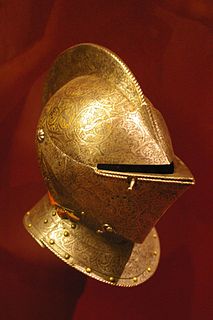 W
WThe close helmet or close helm is a type of military helmet that was worn by knights and other men-at-arms in the Late Medieval and Renaissance eras. It was also used by some heavily armoured, pistol-armed, cuirassiers into the mid 17th century. It is a fully enclosing helmet with a pivoting visor and integral bevor.
 W
WA coat of plates is a form of segmented torso armour consisting of overlapping metal plates riveted inside a cloth or leather garment. The coat of plates is considered part of the era of transitional armour and was normally worn as part of a full knightly harness. The coat saw its introduction in Europe among the warring elite in the 1180s or 1220s and was well established by the 1250s. It was in very common usage by the 1290s. By the 1350s it was universal among infantry militias as well. After about 1340, the plates covering the chest were combined to form an early breastplate, replacing the coat of plates. After 1370, the breastplate covered the entire torso. Different forms of the coat of plates, known as the brigandine and jack of plates, remained in use until the late 16th century.
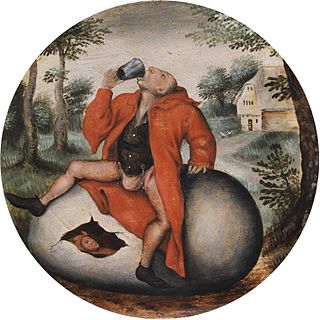 W
WA codpiece is a covering flap or pouch that attaches to the front of the crotch of men's trousers, enclosing the genital area. It may be held closed by string ties, buttons, folds, or other methods. It was an important fashion item of European clothing during the fifteenth and sixteenth centuries. In the modern era, clothing devices with similar functions as codpieces are worn in some styles of underwear, in the leather subculture, and in performance costumes, such as for rock music and metal musicians. A similar device with rigid construction, an athletic cup, is used as protective underwear for male athletes.
 W
WA corslet is defined by the Oxford English Dictionary as "a piece of defensive armour covering the body." In ancient Egypt, Ramesses II is said to have worn a similar device in some battle(s). In Ancient Greek armies, the "hoplite", or heavy infantryman, wore a bronze corslet or known as the thorax to protect his upper body. The corslet consisted of two plates connected on the sides via hinges and bronze pins. By the 16th century, the corslet, also spelled corselet, was popular as a light-half-armour for general military use, e.g., by town guards. It was made up of a gorget, breast covering, back and tassets, full arms and gauntlets.
 W
WThe couter is the defense for the elbow in a piece of plate armour. Initially just a curved piece of metal, as plate armor progressed the couter became an articulated joint. Couters were popular by the 1320s.
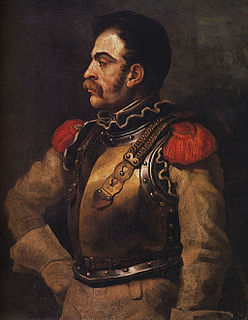 W
WA cuirass is a piece of armour that is formed of a single or multiple pieces of metal or other rigid material which covers the torso. The word originates from the original material; leather, from the French 'cuirace' and Latin word 'coriacea'. The use of the term "cuirass" generally refers to both the chest plate and the back piece together. Whereas a chest plate only protects the front and a back plate only protects the back, a cuirass protects both the front and the back.
 W
WCuirassiers were cavalry equipped with a cuirass, sword, and pistols. Cuirassiers first appeared in mid-to-late 16th century Europe as a result of armoured cavalry, such as men-at-arms and demi-lancers, discarding their lances and adopting the use of pistols as their primary weapon. In the later part of the 17th century the cuirassier lost his limb armour and subsequently wore only the cuirass, and sometimes a helmet. By this time, the sword or sabre had become his primary weapon, with pistols relegated to a secondary function.
 W
WCuisses are a form of medieval armour worn to protect the thigh. The word is the plural of the French word cuisse meaning 'thigh'. While the skirt of a maille shirt or tassets of a cuirass could protect the upper legs from above, a thrust from below could avoid these defenses. Thus, cuisses were worn on the thighs to protect from such blows. Padded cuisses made in a similar way to a gambeson were commonly worn by knights in the 12th and 13th centuries, usually over chausses, and may have had poleyns directly attached to them. Whilst continental armours typically had cuisses that did not protect the back of the thigh, English cuisses were typically entirely encapsulating, due to the English preference for foot combat over the mounted cavalry charges favoured by continental armies.
 W
WThe demi-lancer or demilancer was a type of heavy cavalryman found in Western Europe in the 16th and early 17th centuries.
 W
WThe Earl of Pembroke’s Armour is one of the pieces in the Royal Ontario Museum’s European Collection. This suit of armour belonged to the Earl of Pembroke, William Herbert (1501-1570).
 W
WThe enclosed helmet, also termed a primitive great helm or early great helm, was a type of Western European helmet of the late 12th and early 13th century. It was the forerunner of the great helm.
 W
WThe falling buffe is 16th century armour for the throat and lower face. It evolved from the bevor and was composed of several lames, retained in place by spring catches, which could be lowered for better ventilation and vision. It was often attached to the otherwise open-faced helmet, the burgonet.
 W
WFaulds are pieces of plate armour worn below a breastplate to protect the waist and hips, which began to appear in Western Europe from about 1370. They consist of overlapping horizontal lames of metal, articulated for flexibility, that form an apron-like skirt in front. When worn with a cuirass, faulds are often paired with a similar defense for the rump called a culet, so that the faulds and culet form a skirt that surrounds the hips in front and back; the culet is often made of fewer lames than the fauld, especially on armor for a horseman. The faulds can either be riveted to the lower edge of the breastplate or made as a separate piece that the breastplate snugly overlaps. Although faulds varied in length, most faulds for field use ended above the knees.
 W
WThe Armor of Emperor Ferdinand I is a suit of plate armor created by the Nuremberg armorer Kunz Lochner in 1549 for the future Ferdinand I, Holy Roman Emperor. One of several suits of armor made for the Emperor Ferdinand during the wars of Reformation and conflict with the Ottomans, the etched but functional armor is thought by scholars to symbolize and document the role of the Habsburg Catholic monarchs as warriors on Europe's literal and ideological battlefields.
 W
WThe frog-mouth helm was a type of great helm, appearing from around 1400 and lasting into the first quarter of the 16th century. The helmet was primarily used by mounted knights for tournaments (jousting) rather than on the battlefield.
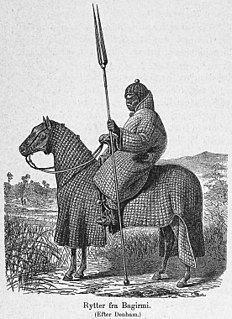 W
WA gambeson is a padded defensive jacket, worn as armor separately, or combined with mail or plate armor. Gambesons were produced with a sewing technique called quilting. They were usually constructed of linen or wool; the stuffing varied, and could be for example scrap cloth or horse hair. During the 14th century, illustrations usually show buttons or laces up the front.
 W
WA gauntlet is a variety of glove, particularly one having been constructed of hardened leather or metal plates which protected the hand and wrist of a combatant in Europe between the early fourteenth century and the Early Modern period. Today it can also refer to an extended cuff covering the forearm as part of a woman's garment.
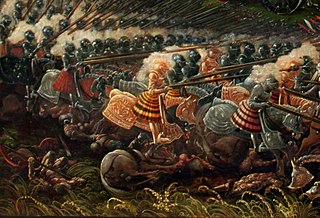 W
WA gendarme was a heavy cavalryman of noble birth, primarily serving in the French army from the Late Middle Ages to the Early Modern period. Heirs to the knights of French medieval feudal armies, French Gendarmes also enjoyed a stellar reputation and were regarded as the finest European heavy cavalry force until the decline of chivalric ideals largely due to the ever-evolving developments in gunpowder technology. They provided the Kings of France with a potent regular force of armored lancers which, when properly employed, dominated late medieval and early modern battlefields. Their symbolic demise is generally considered to be the Battle of Pavia, which inversely is seen as confirming the rise of the Spanish Tercios as the new dominant military force in Europe.
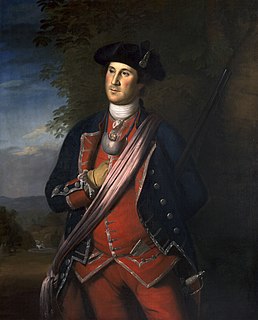 W
WA gorget, from the French gorge meaning throat, was a band of linen wrapped around a woman's neck and head in the medieval period or the lower part of a simple chaperon hood. The term later described a steel or leather collar to protect the throat, a set of pieces of plate armour, or a single piece of plate armour hanging from the neck and covering the throat and chest. Later, particularly from the 18th century, the gorget became primarily ornamental, serving as a symbolic accessory on military uniforms, a use which has survived in some armies.
 W
WThe great helm or heaume, also called pot helm, bucket helm and barrel helm, is a helmet of the High Middle Ages which arose in the late twelfth century in the context of the Crusades and remained in use until the fourteenth century. The barreled style was used by knights in most European armies between about 1220 to 1350 AD and evolved into the frog-mouth helm to be primarily used during jousting contests.
 W
WA greave or jambeau is a piece of armour that protects the leg.
 W
WGreenwich armour is the plate armour in a distinctively English style produced by the Royal Almain Armoury founded by Henry VIII in 1511 in Greenwich near London, which continued until the English Civil War. The armoury was formed by imported master armourers hired by Henry VIII, initially including some from Italy and Flanders, as well as the Germans who dominated during most of the 16th century. The most notable head armourer of the Greenwich workshop was Jacob Halder, who was master workman of the armoury from 1576 to 1607. This was the peak period of the armoury's production and it coincided with the elaborately gilded and sometimes coloured decorated styles of late Tudor England.
 W
WThe Parade Armour of Henry II of France, now in Metropolitan Museum of Art, New York, is believed to date from c 1553–55 and its decoration is attributed to the French goldsmith and engraver Étienne Delaune. Designed for use in pageantry, the armour was fashioned of gold, silver and steel and with leather and red velvet trimmings. It was created for Henry II of France as ceremonial wear; the figures embossed on the breastplate and back are intended to reflect his military achievements.
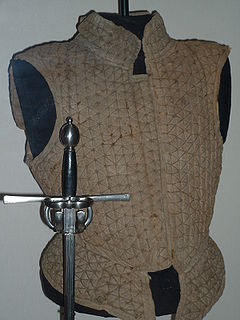 W
WA jack of plate is a type of armour made up of small iron plates sewn between layers of felt and canvas. They were commonly referred to simply as a "jack". This type of armour was used by common Medieval European soldiers as well as by the rebel peasants known as Jacquerie. The present day equivalent is perhaps a bullet-proof vest.
 W
WKasten-brust armour — is a German form of plate armour from the first half of 15th century.
 W
WA lame is a solid piece of sheet metal used as a component of a larger section of plate armor. Multiple lames are riveted together or connected by leather straps or cloth lacing to form an articulated piece of armor that provides flexible protection. The armor worn by the samurai class of feudal Japan used lames in the construction of many of their individual armor parts.
 W
WLaminar armour is an armour made from horizontal overlapping rows or bands of solid armour plates called lames, as opposed to lamellar armour, which is made from individual armor scales laced together to form a solid-looking strip of armor. Prominent examples of such armour are lorica segmentata of Ancient Rome and certain versions of samurai armour.
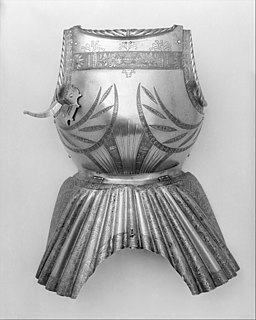 W
WA lance rest is a metal flange that is typically attached to the right side of a breastplate, just under the armpit. The lance rest appeared in the late 14th century, remaining in use until plate armor in general use became obsolete by the early 17th century.
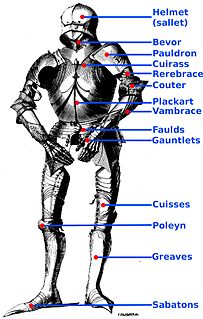 W
WThis table identifies various pieces of body armour worn from the medieval to early modern period in the Western world, mostly plate but some mail armour, arranged by the part of body that is protected and roughly by date. It does not identify fastening components or various appendages such as lance rests or plumeholders, or clothing such as tabards or surcoats, which were often worn over a harness. The slot in the helmet is called an occularium.
 W
WThe lobster-tailed pot helmet, also known as the zischägge, horseman's pot and harquebusier's pot, was a type of post-Renaissance combat helmet. It became popular in Europe, especially for cavalry and officers, from c. 1600; it was derived from an Ottoman Turkish helmet type. The helmet gradually fell out of use in most of Europe in the late 17th century; however, the Austrian heavy cavalry retained it for some campaigns as late as the 1780s.
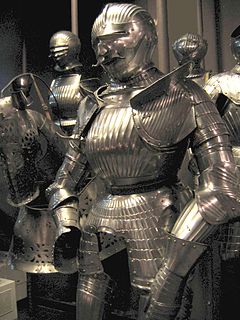 W
WMaximilian armour is a modern term applied to the style of early 16th-century German plate armour associated with, and possibly first made for the Emperor Maximilian I. The armour is still white armour, made in plain steel, but it is decorated with many flutings that may also have played a role in deflecting the points and blades of assailants and increasing the structural strength of the plates. It is a transitional stage in the decoration of armour, after the plain steel surfaces of 15th-century armour and before the elaborate decoration and colouring with etching and other techniques of Renaissance armour. The armour is characterized by armets and close helmets with bellows visors; small fan-shaped narrow and parallel fluting—often covering most of the harness ; etching; work taken from woodcuts; sharply waisted cuirasses, and squared sabatons.
 W
WA morion is a type of open helmet originally from the Kingdom of Castile (Spain), used from the beginning 16th to early 17th centuries, usually having a flat brim and a crest from front to back. Its introduction was contemporaneous with the exploration of North, Central and South America. Explorers such as Hernando de Soto and Coronado may have supplied them to their foot soldiers in the 1540s.
 W
WMunition armour was mass-produced armour stockpiled in armouries to equip both foot soldiers and mounted cuirassiers.
 W
WThe orle was a decorative chaplet or wreath worn on helmets in Western Europe during the first half of the 15th century. There is a level of overlap of function and appearance with the torse, though the latter term implies a twisted pad made up of, usually, two contrasting colours of cloth.
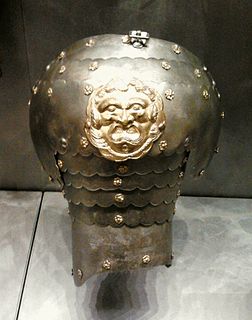 W
WA pauldron is a component of plate armor that evolved from spaulders in the 15th century. As with spaulders, pauldrons cover the shoulder area. Pauldrons tend to be larger than spaulders, covering the armpit, and sometimes parts of the back and chest. A pauldron typically consists of a single large dome-shaped piece to cover the shoulder with multiple lames attached to it to defend the arm and upper shoulder. On some suits of armour, especially those of Italian design, the pauldrons would usually be asymmetrical, with one pauldron covering less and sporting a cut-away to make room for a lance rest.
 W
WA plackart is a piece of medieval and Renaissance era armour, initially covering the lower half of the front torso. It was a plate reinforcement that composed the bottom part of the front of a medieval breastplate. They were predominantly worn in the 15th century. Sometimes they were worn with a metal finish, while the top part of the cuirass was covered in material, the difference in finish making a contrast.
 W
WThe poleyn or genouillere was a component of Medieval and Renaissance armor that protected the knee. During the transition from mail armor to plate armor, this was among the earliest plate components to develop. They first appeared around 1230 and remained in use until 1650 when firearms made them obsolete.
 W
WThe proofing of armour is testing armour for its defensive ability, most commonly the historical testing of plate armour and mail (armour). In the early Middle Ages, armour would be classified by the blows it could withstand, being certified as proof against swords, axes, and arrows. As firearms emerged as battlefield weapons, armour would be tested against them, as well, from which came the modern term "bulletproof".
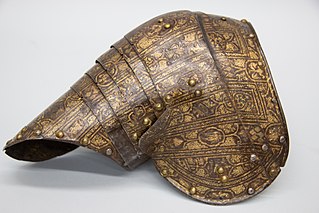 W
WA rerebrace is a piece of armour designed to protect the upper arms. Splint rerebraces were a feature of Byzantine armour in the Early Medieval period. The rerebrace seems to have re-emerged in England, in the early 14th century. As part of the full plate armour of the Late Middle Ages and Renaissance the rerebrace was a tubular piece of armour between the shoulder defences and the elbow protection (couter).
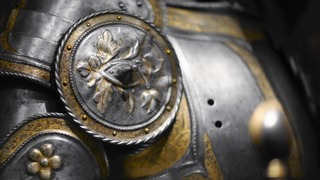 W
WA rondel is a circular piece of metal used for protection, as part of a harness of plate armour, or attached to a helmet, breastplate, couter or on a gauntlet.
 W
WA sabaton or solleret is part of a knight's body armor that covers the foot.
 W
WThe sallet was a combat helmet that replaced the bascinet in Italy, western and northern Europe and Hungary during the mid-15th century. In Italy, France and England the armet helmet was also popular, but in Germany the sallet became almost universal.
 W
WSchynbalds were an early experiment in plate armour for the lower leg. Schynbalds were metal plates strapped over chausses. Each schynbald was a single piece of steel that covered the front and outside of the shin. Schynbalds did not enclose the lower leg: hence, they were not true greaves. Schynbalds first appeared in the 1230s or 1250s and remained in use during the fourteenth and fifteenth centuries.
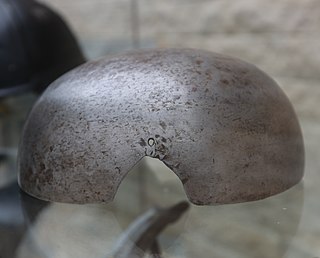 W
WThe secrete or secret, a French term adopted into English usage, was a type of helmet designed to be concealed beneath a hat.
 W
WSpaulders are pieces of armour in a harness of plate armour. Typically, they are a single plate of steel or iron covering the shoulder with bands (lames) joined by straps of leather or rivets. By the 1450s, however, they were often attached to the upper cannon or rerebrace, a feature that continued into the 16th century.
 W
WThe Swiss developed a number of characteristic weapons during their period of military activity in the 15th and early 16th centuries, perfected further during the Early Modern period.
 W
WTassets are a piece of plate armour designed to protect the upper thighs. They take the form of separate plates hanging from the breastplate or faulds. They may be made from a single piece or segmented. The segmented style of tassets connected by sliding rivets produced during the 16th century is also known as almain rivets. From the 16th century onward, the tassets were sometimes integrated with the cuisses to create fully articulated leg defenses that continued from the lower edge of the breastplate down to the poleyn.
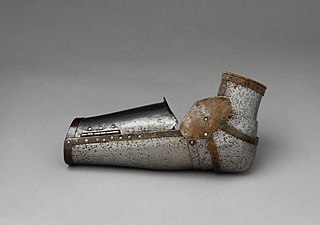 W
WVambraces or forearm guards are tubular or gutter defences for the forearm worn as part of a suit of plate armour that were often connected to gauntlets. Vambraces may be worn with or without separate couters in a full suit of medieval armour. The term originates in the early 14th century. They were made from either boiled leather or steel. Leather vambraces were sometimes reinforced with longitudinal strips of hardened hide or metal, creating splinted armour.
 W
WWhite armour, or alwyte armour, was a form of plate armour worn in the Late Middle Ages characterized by full-body steel plate without a surcoat. Around 1420 the surcoat, or "coat of arms" as it was known in England, began to disappear, in favour of uncovered plate. Areas not covered by plate were protected by mail sewn to the gambeson underneath.